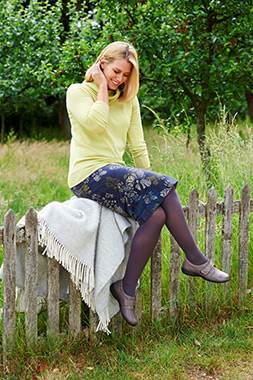Poor Circulation
What is Poor Circulation?
Poor circulation can result when blood flow becomes restricted to certain parts of the body. Often people notice it at the extremities of the body such as the toes or fingers, however, it can affect the entire body and men, women and children can all suffer from it. In less serious situations, this can simply create mild discomfort. However, if the cause is more serious, poor circulation can badly affect mobility and disrupt day-to-day living. The feet are especially prone to circulation issues, as blood tends to pool in the feet due to gravity.
Symptoms of poor circulation can include cold or numb feet or hands, hair loss on feet or legs, a blur pallor to the skin of legs, brittle toe nails and dry and cracked skin, particularly of the feet. The slow healing of wounds or sores can also be a major indication of a sluggish circulation.
Why do we get Poor Circulation?
There are numerous reasons for poor circulation. Here are just a few:
Atherosclerosis can cause poor blood circulation when the veins and arteries become clogged with cholesterol plaque, making them more fragile and less effective. Inadequate nutrition can contribute to poor circulation where the body lacks the essential vitamins, minerals and elements to enable robust blood flow. Lack of movement or lack of exercise can cause life-threatening blood clots (or DVTs), especially in individuals who smoke, are pregnant or take certain medications. Exercise helps circulation as it increases your blood flow, gets the heart pumping blood around your body faster and helps flush the blood through your arteries.
Wearing tight-fitting clothing, such as control-top pantyhose can be detrimental to blood circulation in the legs and feet as they can constrict the blood flow to the important organs in the pelvic region. Inhaling toxic smoke can also constrict blood flow to the heart and brain. Some medical conditions can also cause poor blood circulation. These include blood clots, inflammation of blood vessels, injury and diabetes.
How Can Footwear Help?
Tight-fitting shoes can reduce blood circulation to your feet, just as tying string around your finger can impact circulation. Ill-fitting shoes can also cause poor circulation. When your shoes don't properly fit, especially around your toes, circulation can be impeded as your toes become clenched together against the inside of the shoe. This can also result in blisters and other foot pain, in addition to a decrease in circulation.
Make sure you have properly fitting walking shoes and indoor shoes too, that are comfortable, wide enough, deep enough and provide a lot of support, especially around the ankle. Tell your doctor about concerns related to poor foot circulation, as this can be an early warning sign of diabetes or peripheral artery disease.
We offer shoes in various width and depth fittings so that you can find the shoe that correctly fits your feet.
If for any reason having received your shoes they are not comfortable or do not meet your needs please talk to our customer services team who can give you further help (ring +44 (0)1933 359217 Mon - Fri 9am - 5pm) or return the shoes using our FREE returns service to get an alternative size / fitting.
Just to make sure, you might wish to visit a GOLD STAR STOCKIST or podiatrist who will examine and measure your feet, give you expert advice about the most suitable footwear for you and put your mind at rest
Disclaimer: This information is of a general nature and should not be taken as a diagnosis. All questions and concerns should be directed to your Doctor, Podiatrist or other health advisor.

